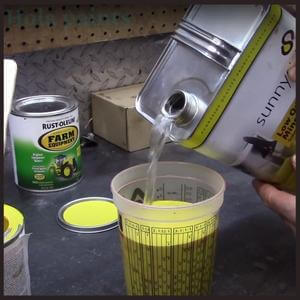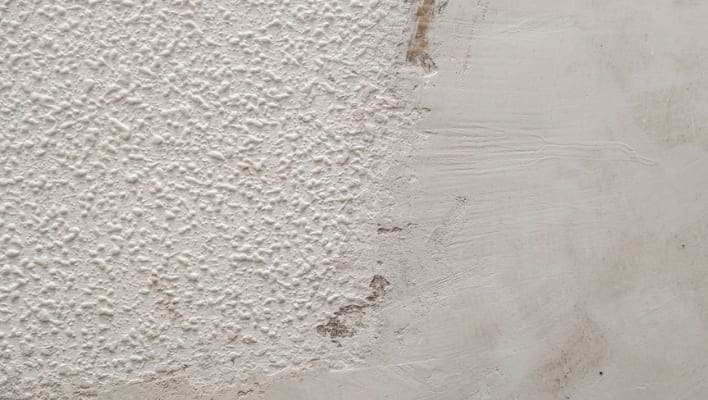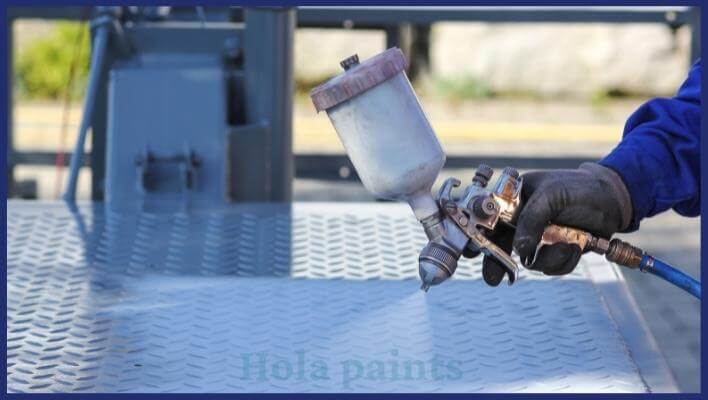If you’ve ever tried spray painting your house, furniture, or car but were not happy with the results, then you’re probably familiar with this experience. You probably wonder where you made a mistake, and you might conclude that you lack the skills or training needed.
That brings us to the article’s subject: how to thin oil-based paint for a spray gun, which many people ask when they are painting the interior or exterior of their house. You can apply thin oil paints much more efficiently with a brush or sprayer.
To achieve this goal, you must use the appropriate tools and equipment. Having experience with oil paint, we have found that it provides superior protection against dirt, grime, stains, and the effects of the weather.
Table of Contents
- Safety Tips When Thinning Oil-Based Paints
- How To Thin Oil-Based Paint For Spraying
- 1. Do your research on the spray gun and paint you use
- * can you use oil based paint in a paint sprayer?
- * How to thin oil-based paint for HVLP spray gun?
- 2. Necessary painting tools
- 3. Pour the paint into a large clean container
- 4. Thinning the paint with the right amount
- * How to use paint thinner?
- 5. Mix the paint thoroughly
- 6. Test the consistency
- What Is Better: Oil-Based Paint or Water-Based?
- Latex Paint Versus Oil Based
- Why Should I Use Oil-Based Paint for Spraying?
- How to Thin Oil-Based Paint for Spraying Automotive?
- What are the disadvantages of Oil Paint on Walls?
- Bottom Line On spraying oil based paint
- FAQs On How To Thin Oil Based Paint?
- Can you thin oil-based paint with water?
- How to thin oil-based paint with Acetone as a paint thinner?
- How to thin an oil-based primer?
- What should I use instead of paint thinner to thin oil-based paint?
- Does paint thinner remove paint?
- how to thin oil-based paint without paint thinner?
Safety Tips When Thinning Oil-Based Paints
- Safety comes first when dealing with oil-based paints.
- Ensure that you’re in a well-ventilated area to prevent inhaling any fumes.
- Wear the right gear like gloves and a mask.
- If you need to thin your paint, do it away from anything that can make a spark since some thinners can catch fire.
- And when you’re done, be responsible and dispose of used paint stuff in an eco-friendly way to protect our environment.
How To Thin Oil-Based Paint For Spraying
There are many benefits to oil-based paint. It is often used to add protection to walls and other surfaces like cabinets and fences; they are popular in exterior work. The leading cause of paint thinning is to reduce its thickness.
Paint thinners, acetone, turpentine, lacquer thinner, and mineral spirits are used to thin out paints that have become too thick and hard to spread.


Our discussions will cover the items you will need for the job and the steps you need to follow to make this a reality. It will take you no time at all to thin your paints.
Below is a 6-step process for spraying oil based paint that we have compiled for your convenience.
Let’s get to know in detail how to spray oil-based paint over latex paint!
Tip#1 There is a possibility that paint particles and paint dust will escape during spray painting. As a result, you can inhale this mist while painting, causing lung complications.
Also, you may experience eye or skin irritation from certain paints. Therefore, when using HVLP or airless spray guns, you should always wear protective gear.
1. Do your research on the spray gun and paint you use

Make sure your spray gun and paint are in good condition before you start applying paint. To begin with, not every spray gun can spray oil-based paints, even when they are thinned.
It is always advisable to read the instructions or visit the manufacturer’s website to know what your spray gun can do. Once the paint is thinned, make sure the sprayer is compatible with oil paint to spray correctly.
Most manufacturers provide instructions on how to use the paint on the can of the paint. The instructions include oil-based paint thinner ratio. If you read the instructions carefully, you will avoid using too many thinning agents, and the paint will work properly.
* can you use oil based paint in a paint sprayer?
Yes, It is possible to use a paint sprayer to spray oil-based paints and primers. In addition, oil-based paint can be mix with mineral spirits or turpentine for thinning the paint.
* How to thin oil-based paint for HVLP spray gun?
HVLP paint gun is primarily used for oil-based paint spraying. You can also use these types of sprayers for interior applications using latex paint. However, It is necessary to thin the paint down first.
Start with 10% water, then gradually add more until the paint is at the right consistency.
Our Testing insights while thinning oil-based paint for the HVLP System:
* Always strain paint through a cone-shaped strainer; this will prevent lumps formation.
* If you use a turbine system, it can heat the paint to dry quickly. Additionally, it might make the paint more viscous, causing it to be thicker.
* To solve this happening, use a longer hose to connect your turbine to your spray gun.
2. Necessary painting tools
After understanding your spray gun’s capabilities, you have to acquire the necessary painting tools for completing the task. Below are some of the items you must have for this job.
- A paint strainer.
- Stir sticks for cleaning.
- The paint funnel.
- Paint thinner like Mineral spirits, or Turpentine.
- A clean bucket or tin.
Fortunately, the list is limited. Some of the items you’ll need are reusable.
Oil-based spray paint requires a strainer. The strainers are like paper cones similar to those filter that is used in coffee makers.
Before you mix the paint with thinning agents, you should use strainers to filter and purify it.
Even if spray paint is mixed thoroughly by the manufacturer, debris and clogging can happen, so a strainer is a necessary tool.
3. Pour the paint into a large clean container
If you are going to thin paint, you will need a large clean container for mixing the thinned paint. Ensure that the paint container is thoroughly clean before using it; otherwise, you can contaminate the oil-based paint.
4. Thinning the paint with the right amount
The other item you will need is Turpentine or mineral spirits (White spirits), and both serve dual purposes such as thinning and cleaning.

* How to use paint thinner?
Turpentine or mineral spirits are both thinned agents. The standard ratio for mixing these substances is 1:3. You can use 1 part of thinner and three parts of paint to keep oil paint’s amount higher than that of thinner.
Also, it simplifies your cleaning process.
5. Mix the paint thoroughly
You can use stirring sticks or any other clean object to stir the paint and avoid adding unnecessary contaminants.
Next, You need a clean, clear plastic funnel to mix and pour the paint. The surface should be smooth enough to allow the paint to flow easily.
Tip#2 Cold paint appears thicker than it is so that it can be deceiving. Make sure to thin paint at room temperature so that you don’t overdo it.
6. Test the consistency
After mixing the paint thoroughly, we suggest you test the thinning paint. You may need to add more thinner if you find the paint too thick with gentle stirring at the same time.
To use the paint, you have to pour it into the sprayer. You can now paint effortlessly!
What Is Better: Oil-Based Paint or Water-Based?
When it comes to picking paint, you’ve got two main options: oil-based and water-based. The choice really depends on your project. Oil-based paint is super tough and leaves a shiny finish. It’s great for places that need a strong coat of paint. On the other hand, water-based paint is eco-friendly, dries quickly, and is a breeze to clean up. Before starting your project, think about your surface and where you’re painting.That’s the secret to completing the task correctly.
Latex Paint Versus Oil Based

Why Should I Use Oil-Based Paint for Spraying?
Using oil-based paint for spraying offers some benefits. These paints are recognized for their toughness and their capability to create a sleek, shiny surface. They stick well to different surfaces, which makes them suitable for various indoor and outdoor projects. The slower drying time allows for a smoother finish. But remember to ensure good ventilation and be patient with the longer drying times when using oil-based paint.
How to Thin Oil-Based Paint for Spraying Automotive?
To get oil-based paint ready for automotive spraying, thinning it is key. I mostly use mineral spirits or paint thinner for this purpose. Start by pouring some paint into a container and add a little bit thinner. Mix it well, and slowly add more thinner until it’s just right. The aim is to have a paint mix that flows smoothly through your spray gun without any blockages.
What are the disadvantages of Oil Paint on Walls?
Although oil-based paint lasts long, it’s not perfect for walls. The drying time can be a bit of a bother. Over time, it can turn yellow and need more upkeep. Plus, cleaning up might mean using strong chemicals.
Bottom Line On spraying oil based paint
Hopefully, you learned how to thin oil-based paint for sprayers from this guide, as many people do not know how to do it. This is a valuable skill that not everybody knows. However, you’ll be able to paint faster than you ever thought possible with our 6 step process.
The process of working with paints is quite tricky, especially when you want to use them for spray painting. We have provided you with details on thinning paint that is so valuable that you should spread it as far as possible.
Happy thinning, and Best of luck on your next project!
FAQs On How To Thin Oil Based Paint?
Can you thin oil-based paint with water?
You can’t thin an oil-based paint with water. Natural oil-based paints don’t mix well with water. If you want to get the job done, you will need mineral spirits or Turpentine.
How to thin oil-based paint with Acetone as a paint thinner?
Acetone softens and lifts paint, and it works well for both Latex and Oil-based paints. Acetone is a good additive for paint and varnish removers due to its good removal abilities.
How to thin an oil-based primer?
You can thin the primer slightly with mineral spirits if it is difficult to smooth with your paintbrush. There is no specific ratio of mineral spirits to primer. If the Primer labels do not contain a thinning ratio, you most likely have to use 1.5 cups of primer and then add 1.5 cups of the thinning agent.
What should I use instead of paint thinner to thin oil-based paint?
You can substitute Turpentine for paint thinner. White spirits and mineral spirits are less toxic than Turpentine. Also, you can use either acetone or mineral spirits for good results.
Does paint thinner remove paint?
Oil-based paint dries too fast and hardens in such a way that it’s difficult to remove. You can remove oil-based paint from brushes only when the paint is wet. However, Acetone is usually the only solvent that is strong enough to dissolve dried paint.
how to thin oil-based paint without paint thinner?
You can also thin oil-based paint with vinegar. Just make sure that it is pure vinegar, as other types contain pigments. Place the paint you wish to thin in the bucket and stir. Then add ¾ cup of vinegar to 1 gallon of paint.

Jennifer Marie
Jennifer Marie is a general contractor with over the years of experience in home remodeling, DIY projects, and commercial painting projects. Her experience includes working with paint sprayers, painting tools, and other painting supplies. You can follow her on Facebook.


